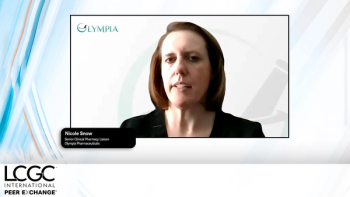
LCGC Europe eNews
- LCGC Europe eNews-05-03-2013
- Volume 0
- Issue 0
Safe and Sustainable Water Resources
The National University of Singapore Environmental Institute (NERI) and Thermo Fisher Scientific are collaborating on a project to monitor and improve water quality in Singapore. LCGC spoke to the scientists involved to find out more about the project.
The National University of Singapore Environmental Research Institute (NERI), Singapore Centre on Environmental Life Sciences Engineering (SCELSE) and Thermo Fisher Scientific are collaborating on a project to monitor and improve water quality in Singapore. LCGC spoke to Associate Professor Sanjay Swarup and Dr Victor J. Nesatyy to find out more about the project.
What are your main research interests?
Swarup: Our group is interested in studying two main areas: (a) the role of metabolites in model biological systems and (b) the ecology of mixed microbial communities in different environmental settings. The results of these studies provide the basis for developing applied solutions on bioremediation and watershed management.
We are investigating small molecules involved in metabolic networking and those secondary messengers that control diverse biological pathways in model bacterial species. Presently, we have comprehensively mapped the responses of the ‘metabolome’ of cells in response to perturbations, such as metabolic mutations, effector molecules, and environmental stresses from both plants and humans.
Our group is taking a multidisciplinary approach by incorporating hydraulics, (meta-) genomics, metabolomics, computational modelling, and high-resolution imaging to study the different interesting biological systems.
What are the aims of the collaboration?
Swarup: We will study how metabolism in plants and bacteria affect water quality and the ecosystems in Singapore and the surrounding environment.
One of the goals is to discover better water purification techniques that use natural processes. Safe and sustainable quality water is fundamental to both human and ecosystem health. By understanding how plants and microbes affect our water quality better, we could look into developing improved tools or methods that could significantly increase our ability to identify health and environment threats more prudently.
NERI and Thermo Fisher Scientific share the same vision of making the world healthier, cleaner, and safer. Our collaboration, marrying nature and technology, will help bring new findings that would benefit society and create tremendous synergy via combination of research expertise and modern analytical technology. This will enable a good exchange of ideas and expertise on new sample preparation methodologies; development of innovative applications; and publications for the scientific community.
Why have you prioritized the urban water cycle as a key theme? Why is this important?
Swarup: Urbanization has been the most rapid form of land use change as a result of economic growth, especially in developing countries. Currently, urbanization and its rapid increase in the developing world threaten the microbial ecosystems that are associated with rivers and streams within and surrounding the cities.
Apart from the natural bio- and geochemical cycles, the urban biogeochemistry is dominated by the degradation of chemicals of anthropogenic origin. Pollutants, including pesticides, heavy metals pharmaceuticals, industry chemicals, and vehicle emissions, are being deposited into the catchment and find their way to streams through storm water.
Given that water is a scarce resource, especially from the standpoint of its growing demand in urban areas, studying the urban stream biogeochemistry and microbial ecology is emerging as an important field of research globally.
What are the analytical approaches you will use? Why will you use these methods?
Nesatyy: We will employ a wide range of analytical tools including state-of-the-art liquid chromatography–mass spectrometry (LC–MS) systems to identify and measure metabolites in samples. Currently there are two major workflows in LC–MS-based metabolomics: discovery and quantitation, which is also known as quanfirmation – an approach which combines MS-based confirmation with quantitative measurements. The first line of investigation will be conducted using discovery LC–MS-based workflow, where a wide range of metabolites extracted from complex biological matrices will be separated by the ultra performance liquid chromatography, ionized by the conventional electrospray or atmospheric pressure photo or chemical ionization source, and detected by a high resolution accurate mass spectrometer.
Following data acquisition from a number of samples of interest, complex LC–MS profiles resulting from the measurements will be compared and features of interest will be identified. Further analysis of those features may include the quan-firmation workflow, which could involve the same high-resolution accurate mass spectrometer or pure quantitation by triple quadrupole mass spectrometer. We will also be well-equipped to deal with relatively large sample volumes (up to 20 mL) by injecting them into LC using automated turnkey system specifically designed for water analysis.
What are the main challenges you are expecting?
Nesatyy: We are expecting to face numerous challenges during the course of our work – beginning from the sample preparation to finishing the data processing.
For the sample preparation, we will need to develop a fast and efficient LC–MS compatible protocol for the removal of humic acids, major component of any waterway system. This task is necessary since existing solutions are very tedious, time-consuming, expensive, and involve a number of steps that may lead to potential loss or transformation of the metabolites of interest.
The sheer amount of samples needed to be compared simultaneously presents another challenge on the data processing side. Their numbers may easily reach into the hundreds and will put excessive strain on the existing data processing software.
Additional challenges include sifting through the data and identifying features deemed to be statistically significant for further identification of potential metabolites and their quantitation. The identification of those features greatly depends on the data pre-processing steps: scaling, transformation, and normalization, and the selection of statistical tests themselves, which is a subject of vigorous scientific discussion at the moment.
Sanjay Swarup holds Ph.D. degrees in genetics and in plant pathology from India and the USA, respectively. He is currently Associate Professor at the National University of Singapore; Deputy Director, NUS Environmental Research Institute (NERI); and Deputy Cluster Head and Graduate Programme Director at the Singapore Centre on Environmental Life Sciences Engineering (SCELSE).
Victor J. Nesatyy obtained his M.Eng degree in biotechnology in 1992 from the Lomonosov Moscow University of Fine Chemical Technology, Russia. In 1996, he graduated from the Weizmann Institute of Science, Israel, with an M.Sc. degree in biochemistry. He then pursued his growing interests in modern analytical biochemistry and mass spectrometry techniques and finished his Ph.D. studies in 2000 at the University of British Columbia, Canada. In 2012, he joined NUS Life Science Institute, Singapore to work on the Singapore Centre on Environmental Life Sciences Engineering (SCELSE) Programme under the joint collaboration between NUS Environmental Research Institute (NERI) and SCELSE.
Articles in this issue
over 12 years ago
HPLC2013 Amsterdam: A PreviewNewsletter
Join the global community of analytical scientists who trust LCGC for insights on the latest techniques, trends, and expert solutions in chromatography.





